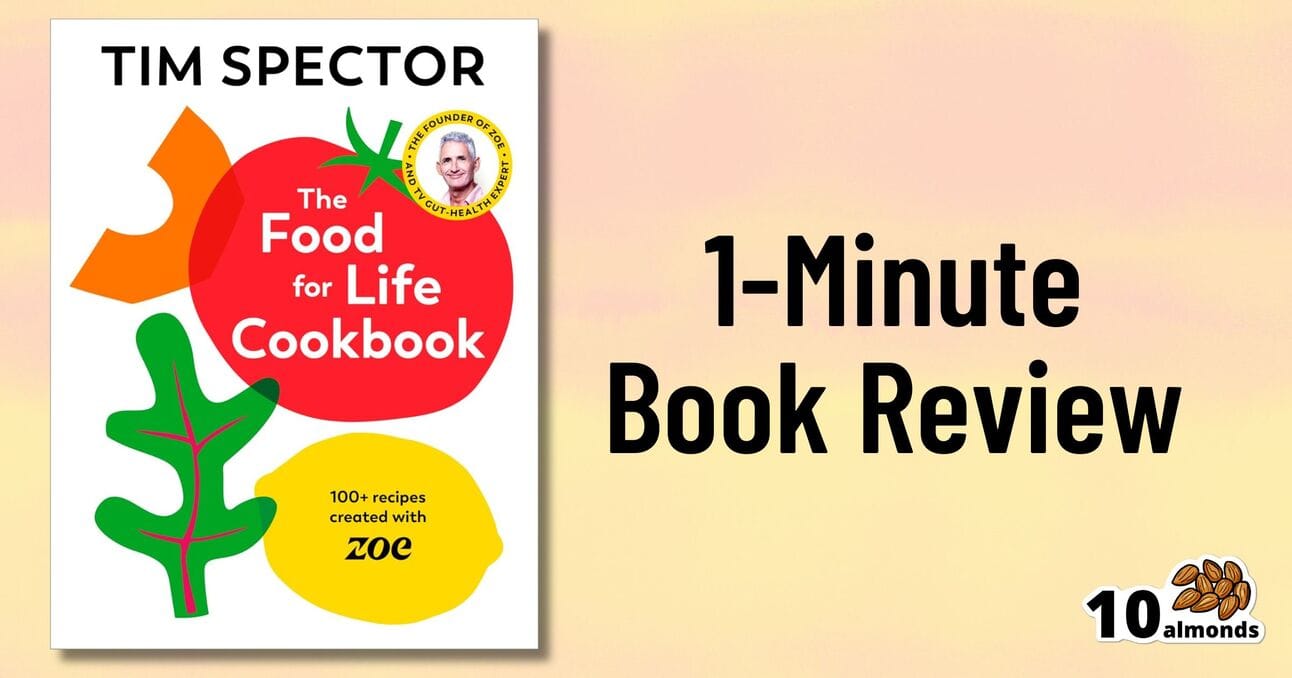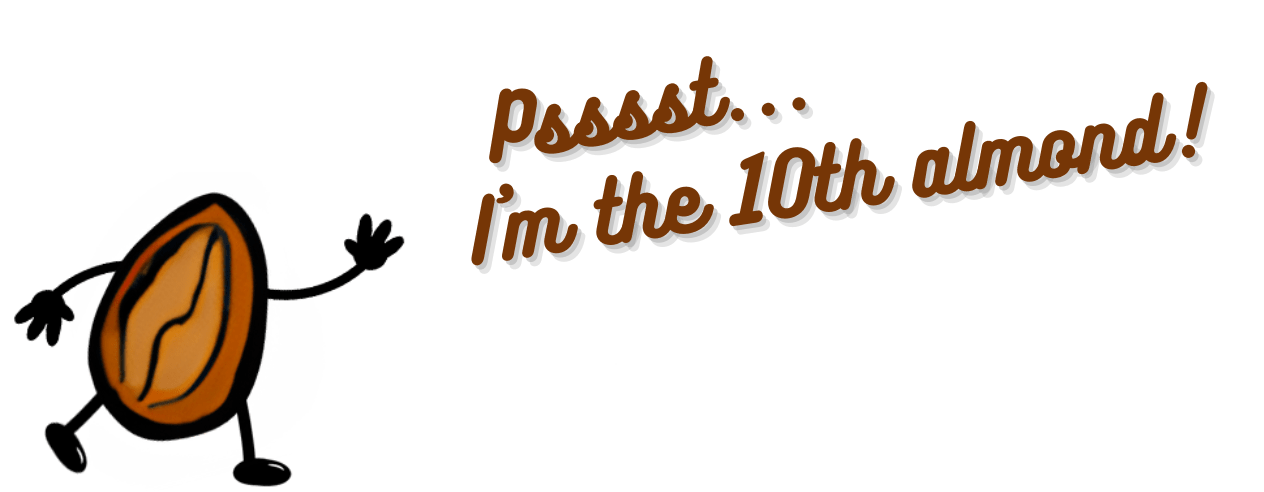It is now November, and you know what that means: time to decide what you want your health to be like in December, and get going with the healthy habits to make that a reality!
In A Rush?
Today’s 30-Second Summary
If you don’t have time to read the whole email today, here are some key takeaways:
This week’s news round-up is all about things above the neck, and mostly in the brain
Today’s main feature covers the news from beating depression to beating cognitive decline, from mindfulness against pain to dentistry nightmares to avoid
How’s your hydration right now? For most people, at any given time, it’s not great. But it doesn’t have to be that way!
Today's sponsor NativePath is offering a free gift and free shipping with their range of electrolyte and amino acid drink mixes, which are great for your kidneys, bladder, and more.
Today’s featured book takes the science from Dr. Tim Spector’s seminal work “Food For Life”, and makes it into a cookbook!
Read on to learn more about these things, or click here to visit our archive
A Word To The Wise
How Soon Will We Have A Cure For HIV?
7 people have been completely cured already, and the work to produce a globally-applicable cure is in its final stages now:
Watch and Learn
10 Ways To Naturally Boost Dopamine
Dopamine is the “reward” hormone, and is responsible for motivation, as well as various oft-forgotten functions (such as spatial skills, motor functions, task processing, planning, and language). Sometimes, our relationship with dopamine isn’t what it could be, so here’s how to fix that:
Prefer text? The above video will take you to a 10almonds page with a text-overview, as well as the video!
Friday’s Health News Round-Up
All In Your Head (Which Is Where It’s Supposed To Be)
Today’s news is all about things above the neck, and mostly in the brain. From beating depression to beating cognitive decline, from mindfulness against pain to dentistry nightmares to avoid:
Transcranial ultrasound stimulation
Transcranial magnetic stimulation is one of those treatments that sounds like it’s out of a 1950s sci-fi novel, and yet, it actually works (it’s very well-evidenced against treatment-resistant depression, amongst other things). However, a weakness of it is that it’s difficult to target precisely, making modulation of most neurological disorders impossible. Using ultrasound instead of a magnetic field allows for much more finesse, with very promising initial results across a range of neurological disorders
This may cause more pain and damage, but at least it’s more expensive too…
While socialized healthcare systems sometimes run into the problem of not wanting to spend money where it actually is needed, private healthcare systems have the opposite problem: there’s a profit incentive to upsell to more expensive treatments. Here’s how that’s played out in dentistry:
Read in full: Dentists are pulling healthy and treatable teeth to profit from implants, experts warn
Mindfulness vs placebo, for pain
It can be difficult with some “alternative therapies” to test against placebo, for example “and control group B will merely believe that they are being pierced with needles”, etc. However, in this case, mindfulness meditation was tested as an analgesic vs sham meditation (just deep breathing) and also vs placebo analgesic cream, and vs distraction (listening to an audiobook). Mindfulness meditation beat all of the other things:
Getting personal with AI doctors
One of the common reasons that people reject AI doctors is the “lack of a human touch”. However, human and AI doctors may be meeting in the middle nowadays, as humans are pressed to see more patients in less time, and AI is trained to be more personal—not just a friendlier affect, but also, such things as remembering the patient’s previous encounters (again, something with which overworked human doctors sometimes struggle). This makes a big difference to patient satisfaction:
Related: AI: The Doctor That Never Tires?
Combination brain therapy against cognitive decline
This study found that out of various combinations trialled, the best intervention against cognitive decline was a combination of 1) cognitive remediation (therapeutic interventions designed to improve cognitive functioning, like puzzles and logic problems), and 2) transcranial direct current stimulation (tDCS), a form of non-invasive direct brain stimulation, similar to the magnetic or ultrasound methods we mentioned earlier today. Here’s how it worked:
Related: How To Reduce Your Alzheimer’s Risk
Take care!
Our Sponsors Make This Publication Possible
Beat winter dryness with NativePath Hydrate
Don't let winter dryness drain your natural energy. Stay hydrated, and vibrant with NativePath Hydrate—a powerful powdered electrolyte drink mix designed to keep you hydrated as nature intended.
Unlike most hydration supplements, Native Hydrate contains high-quality amino acids and electrolytes, providing optimal hydration without excessive sodium or added sugars. Simply mix one scoop of our refreshing powder into water or your favorite beverage to enjoy increased energy levels, improved muscle strength and bladder function.
And here's the best part: Stock up now and enjoy up to 44% off your purchase, plus receive a free gift and free shipping with every order:
Please do visit our sponsors—they help keep 10almonds free
This Or That?
Vote on Which is Healthier
Yesterday we asked you to choose between avocado and blueberries—both distinctly superfoods, but ultimately we picked the avocado (click here to read about why), as did 46% of you!
Now for today’s choice:
Click on whichever you think is better for you!
One-Minute Book Review
The Food For Life Cookbook: 100+ Recipes Created with ZOE – by Dr. Tim Spector
We’ve previously reviewed Dr. Spector’s “Food For Life”, and while that was more of an “explanatory science” book, this one takes that science (reiterating it more briefly this time, by way of introduction) and makes a cookbook of it.
The nutritional emphasis in these recipes is on two things: maximizing fiber, and maximizing plant diversity. The recipes are not all vegan or even vegetarian, but they are plant-centric, and if the reader is vegetarian/vegan, then substitutions are easy to make.
The recipes themselves are simple without being boring, and are easy to follow, with full-page photos to accompany them. The science parts are very clear, accessible, and pop-science in style.
Bottom line: if you’d like to incorporate more fiber and more plants into your diet without it being a burden, this book is great for that.
Penny For Your Thoughts?
What did you think of today's newsletter?
May today see you well-prepared for the coming weekend and the new month ahead,
The 10almonds Team








